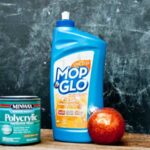Have you ever found a wrinkled banknote in your wallet or purse and wondered if you could simply iron it flat to make it look as good as new? The idea of ironing money might seem like a quick fix, but it raises several questions about the implications and potential risks involved. Let’s delve into the world of currency preservation and explore whether can you iron money to make it flat…
What Happens When Money Gets Wrinkled?
Before we jump into the ironing debate, let’s understand why money gets wrinkled in the first place. Banknotes, commonly made from a blend of cotton and linen fibers, are flexible but can easily crease or fold due to regular handling or improper storage. As such, wrinkled money is a common occurrence.
The Composition of Banknotes: Understanding the Materials
To comprehend the effects of ironing on money, it’s essential to understand the composition of banknotes. The combination of cotton and linen fibers, along with security features like watermarks and security threads, gives banknotes their unique texture and appearance.

The Dangers of Using High Heat on Currency
High heat, such as that from an iron, can be harmful to various materials. When it comes to banknotes, exposing them to excessive heat can cause irreparable damage, affecting their integrity and value. The use of an iron on money can lead to unintended consequences, making it a risky practice.
Can You Iron Money To Make It Flat?
The question of whether you can iron money to make it flat is a contentious one. Some individuals believe ironing to be a quick solution, while others vehemently oppose the idea, citing potential dangers and legal concerns.
Ironing Money as a Legal and Ethical Concern
The legality of ironing money varies from country to country. In some regions, altering banknotes, even with good intentions, can be considered illegal and may lead to penalties. Additionally, there are ethical considerations related to preserving the integrity of currency issued by central banks.
Tips for Safely Handling Wrinkled Banknotes

If you encounter wrinkled money, there are alternative methods to flatten it without resorting to ironing. This section will explore safe and recommended techniques for handling and flattening banknotes without compromising their quality.
Using Alternative Methods to Flatten Money
Discover some alternative methods that currency collectors and preservationists use to flatten wrinkled banknotes effectively. From humidity and pressure to encapsulation, these techniques can be safer and less damaging to your money.
The Impact of Ironing on Counterfeit Detection
Ironing banknotes can affect their security features, potentially compromising counterfeit detection measures. Understanding how ironing impacts the ability to verify genuine currency is crucial in evaluating whether it’s worth the risk.
Understanding the Role of Central Banks in Currency Preservation
Central banks play a vital role in maintaining the integrity and value of currency. Learn about their efforts to replace damaged banknotes and ensure a reliable monetary system.
The Role of Currency Collectors and the Value of Uncirculated Notes
For currency collectors, the preservation of banknotes is of utmost importance. Explore the world of numismatics and the value of uncirculated, pristine banknotes in the eyes of collectors.
The Science Behind Wrinkle Removal: Is Ironing Effective?

From a scientific standpoint, analyze whether ironing genuinely helps to remove wrinkles from banknotes or if it causes more harm than good.
The Potential Risks of Ironing Money: Discoloration and Damage
Ironing money can lead to unintended consequences such as discoloration, loss of security features, and overall damage to the banknote. Understand the risks associated with ironing currency.
Learning from Past Mishaps: Famous Cases of Ironed Currency
Discover notable incidents where individuals attempted to iron money and faced legal repercussions or damaged valuable banknotes.
Bank Policies and Regulations Regarding Damaged Banknotes
Examine the policies and regulations set forth by central banks and financial institutions concerning damaged or mutilated banknotes.
How to Deal with Irreversibly Damaged Money
In cases where banknotes are irreversibly damaged or mutilated, find out the proper procedures for exchanging them for new ones.
Conclusion: Weighing the Pros and Cons of Ironing Currency
After examining the various aspects of ironing money, it’s essential to weigh the potential benefits against the risks and legal implications. Ultimately, it is crucial to handle money with care, respecting its significance and the efforts made to preserve its integrity. Emphasize the importance of seeking guidance from financial institutions or currency experts when dealing with damaged banknotes.





